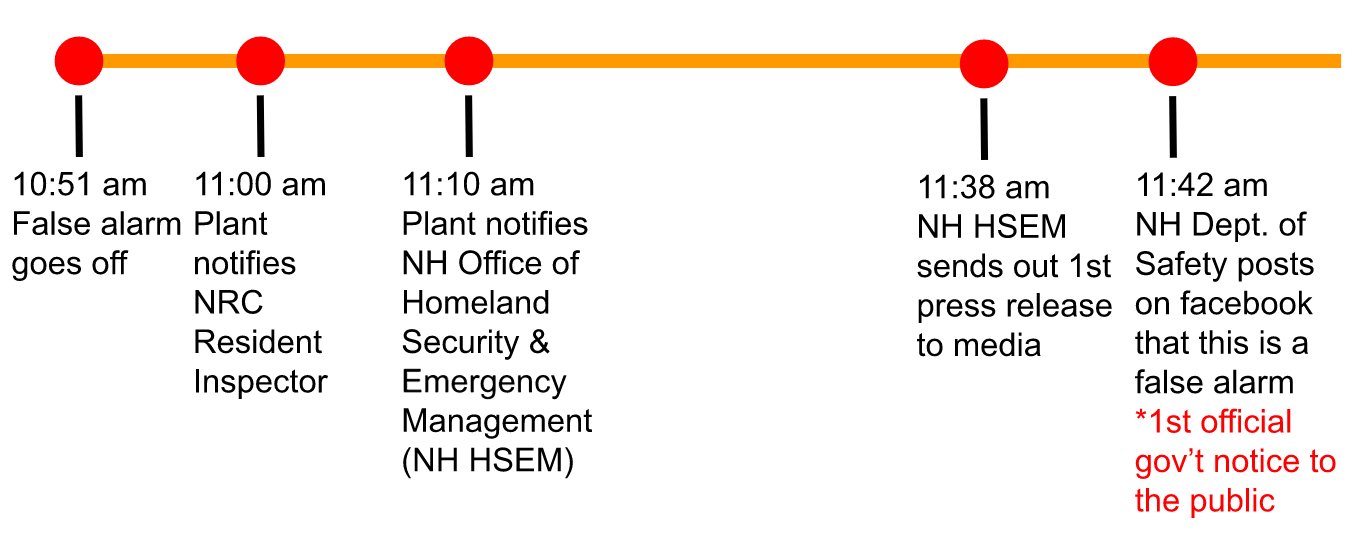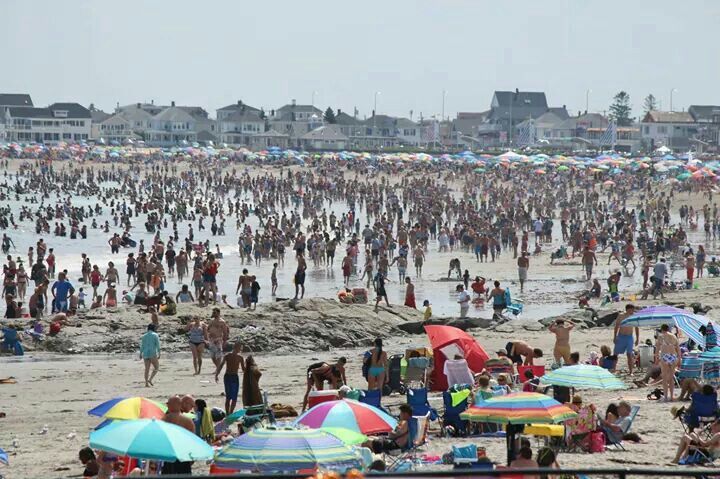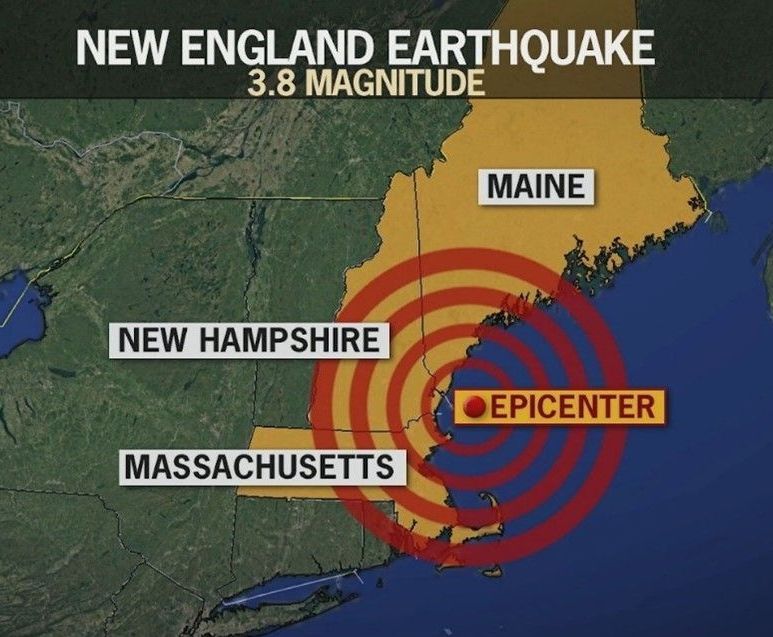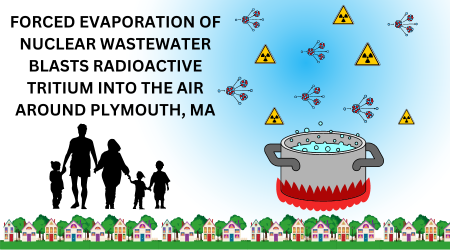Seabrook Nuclear Plant's False Alarm Blunder
- By Sarah Abramson
- •
- 26 Jul, 2022
The day was hot, the beaches were full, the Seabrook nuclear plant was doing some unannounced testing of its alarm systems, what could go wrong?

Tuesday, July 12, 2022 is a date still very fresh in our memories after technicians at the NextEra Nuclear Plant in Seabrook, NH inadvertently caused a verbal alert to go off at nine (9) sirens located along the New Hampshire coast from Hampton Beach up to New Castle. The message told the public that there was an issue at the plant, to evacuate the beach immediately, and to turn on their radios for further instruction.
We now know that it took almost an hour for an official government statement to be sent to the public that this was a false alarm. Although the NRC responded to media inquiries one at a time as they received them, they lagged in getting out an official statement. It is nice to know that the plant's owners NextEra and the regulating agency the Nuclear Regulatory Commission (NRC) were talking to each other early on, but for quite a long time the public was uninformed and panicking, which very easily can turn into a public safety issue.
In the absence of clear communication from the plant, NRC, or local authorities, C-10 stepped up to do our part as an independent watchdog of the plant and operator of the Citizens Radiation Monitoring Network.

Starting when the alarm went off, C-10 received an influx of emails and phone calls from concerned citizens who wanted to know how much radiation our monitoring network was reporting. We spoke directly with the NRC resident inspector who was on site at the plant. He confirmed that it was a false alarm caused during a routine test, and that the plant's internal monitors were all indicating that the plant was operating normally. Shortly thereafter, we posted on all of our social media platforms that we understood the alarm was false and that all of the sites across our Citizens Radiation Monitoring Network were reporting normal and stable radiation levels in real time.
Later, even after the false alarm was confirmed by the plant and official government agencies, the calls kept coming in to C-10, as some members of the public do not have complete trust that this was a false alarm. One Hampton resident told our Executive Director, Sarah Abramson, “My neighbor and I are talking about packing the car with the kids and some essentials and going north.” C-10 issued a press release later that day to underscore that we all need to evaluate how prepared our communities truly would be if there were a real radiological emergency.
In the days that followed, C-10 gave statements to the media and appeared on multiple TV News broadcasts, reiterating the follow-up that we'd like to see, and stating again that our network showed that radiation levels were and continue to be normal.
Now that some time has passed, we are getting a clearer picture of how people felt during what could be viewed as an unscheduled evacuation drill: scared, panicked, and confused. Some beachgoers complied with the message's orders, though packing up your beach chair and cooler should probably not be a priority in a radiological emergency. Others simply stayed where they were, frozen with confusion or simply surrendering to what they thought was their inevitable demise.
Although it is important that we now know how this happened (a technician used the wrong key, out of two keys to choose from), human error is the red herring in this situation. The investigation that we deserve would answer the question of how well would this have gone if it were a real emergency. Not everyone who heard the message complied; first responders scrambled and behaved differently than directed in their emergency response plan and did not have the resources to answer every call they were receiving. The plant was effectively unreachable for official comment for almost an hour.
Recall that it is FEMA's responsibility to ensure that local communities located in the 10-mile radius around a nuclear plant have adequate resources and plans in place for a radiological emergency. Historically, this has looked like local responders proving to FEMA that they practice their plans in order to receive a passing grade. We want to ask: Shouldn't it be FEMA that is receiving a grade from us? FEMA should be taking more leadership and should increase training and educational resources to first responders, schools, companies, and residents who live near a nuclear plant. It should be FEMA that confirms that EPZ towns have adequate funding to properly staff their first-responder groups so they can be ready if there is a radiological emergency (e.g. no EPZ town's fire department should be all or mostly volunteer). We'd also like to see a federal agency like FEMA or the Dept. of Health take charge of running a program that distributes Potassium Iodide (KI) pills to every EPZ household. It is time for FEMA to take more seriously their designated role as the disaster-prevention agency and significantly increase their support of our first-responder groups and communities.
C-10 will continue to put pressure on the NRC and elected officials to hold the plant and FEMA accountable for their duty to put public safety at the top of the priority list (click here for more information on radiological emergency preparedness).
In addition to the procedural and communication gaps revealed during this false alarm, we also know that Seabrook Station is an aging nuclear plant with known "concrete cancer" affecting 43 structures, including the containment structure around the reactor. Citizens have a right to be concerned and get answers about how safe it is to have this plant in their backyard. C-10 launched a successful legal challenge that forced the plant to check on those concrete cracks more often, and we continue to scour every NRC report for updates on the degrading concrete and what the plant and the NRC are doing about it.
For more insights about how the C-10 mission applies to this false alarm, watch, listen, or read some of these news stories from WMUR, Seacoastonline, and the New Hampshire Bulletin.

Follow us



